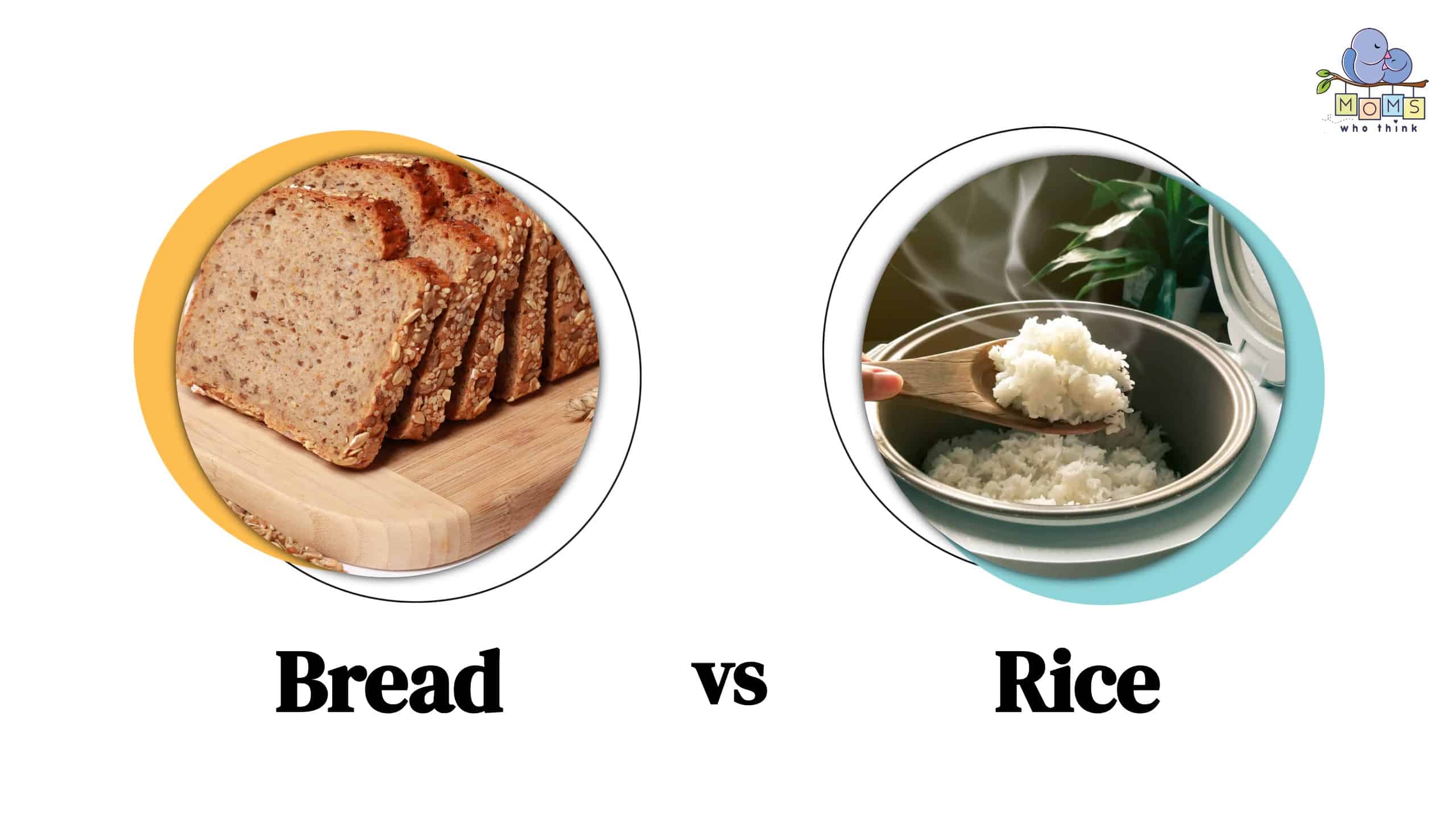In addition to having differences and similarities, bread vs. rice are two staple meals that people all around the world eat. They are significant mineral and vitamin producers and are both high in carbs, starch, and fiber.
The plant Oryza sativa produces rice, while people mix wheat, water, and yeast to create a dough for baking bread.
Some people who entirely cut off carbohydrates from their diets won't get adequate protein for their bodies to function properly. Therefore, if they are highly active in sports or various physical pursuits, they may have a higher risk for injury. This is why picking a good carb source is key.
Despite differences in their uses, texture, flavor, origin, and composition, they also have a number of similarities. So continue reading if you want to learn more!
Bread vs. Rice: Key Differences
Both bread and rice are crucial food items that are great providers of carbs, which are needed for energy. But despite their wide popularity and significance in the food industry, what really are their differences?
Culinary uses
You can always use bread in many different ways. Bread may be used to make croutons and different kinds of sandwiches with varied fillings. You may grind bread to make breadcrumbs. Fresh breadcrumbs give a crispy texture and an appealing look to baked dishes that need toppings.
- The must-have convenient reference guide for every home cook!
- Includes more than 8,000 substitutions for ingredients, cookware, and techniques.
- Save time and money on by avoiding trips to grab that "missing" ingredient you don't really need.
Rice, conversely, is a very versatile side dish that you can add to various meals. This typically goes well with Japanese, Chinese, Mexican, and American cuisines. Some people commonly pair this with curries, stir-fries, and various other flavor-rich viands. This also serves its purpose as the base for certain meals, such as sushi and rice pudding.
Nutrients
A cup of rice provides 206 calories, while a piece of bread contains 66 calories. If you want to lose weight and get leaner, bread is definitely the more favorable choice for you than white rice. According to studies, individuals who chose bread over rice decreased their weight successfully. This is because rice has more calories and carbs per serving than bread. But as opposed to bread, rice offers higher amounts of protein, vitamins, and minerals.
Composition
Bread is a basic meal that people bake by using a dough made from flour (typically wheat) and a liquid (water or milk). The recipe for bread calls for flour, water, salt, yeast, and other components. Rice, on the other hand, is a consumable starchy grain that comes from the grass plant (family Poaceae).
Taste
Although both bread and rice are high in carbs, the flavors of the two foods are significantly different. Even in their basic form, breads are considerably more delectable because of their variations. Contrarily, people typically do not eat plain rice unless they flavor it or pair it with something tasty.
Rice's flavor often exhibits subtlety and a slightly nutty quality. However, this could still change depending on the kind of rice used, its preparation, as well as the spices incorporated. On the other hand, bread might taste like biscuits, fruits, ripe wheat, or whole-grain, or can be vinegary, salty, acidic, malty, and caramelized depending on the kind of dough used as well as the ingredients added.
Texture
Bread has a moist, supple, yet spongy texture. The process of leavening bread produces the bread's airy structure and develops its taste by converting carbohydrates included in the dough into carbon dioxide, gas, and alcohol.
In the case of rice, depending on the variety of rice, every single starch has a variable quantity that affects the cooked rice's fluffy, creamy, or sticky texture.
Bread vs. Rice: Nutritional Value
People around the world consume bread and rice as staple foods. Although both foods contain carbohydrates, their nutritional profiles differ in several ways.
Bread, depending on the type, can consist of whole grains, refined grains, or a combination of both. Generally, people consider whole grain bread more nutritious because it retains the fiber-rich bran and nutrient-rich germ. It offers a good source of complex carbohydrates, essential vitamins, and minerals like iron and B vitamins. In contrast, refined bread made from white flour has less fiber and fewer nutrients.
Rice, a cereal grain, comes in various forms, such as white rice, brown rice, and wild rice. White rice, the most common type, undergoes processing that removes the bran and germ, resulting in nutrient loss. Conversely, brown rice preserves the bran and germ, making it a healthier option. It provides fiber, B vitamins, magnesium, and other minerals.
Regarding calorie content, both bread and rice are similar, providing around 80-100 calories per serving. However, rice tends to have slightly higher carbohydrate content, while bread may have more protein.
Dietary preferences and health conditions can influence the choice between bread and rice. Bread is suitable for individuals on gluten-free or low-carbohydrate diets due to the availability of grain-free bread alternatives. Rice, especially whole grain varieties, can benefit those seeking to increase fiber intake or manage blood sugar levels.
To conclude, the nutritional value of bread and rice varies depending on factors such as type, processing, and individual dietary needs. Opting for whole-grain bread or brown rice can offer more fiber and essential nutrients compared to refined alternatives, making them healthier choices overall.
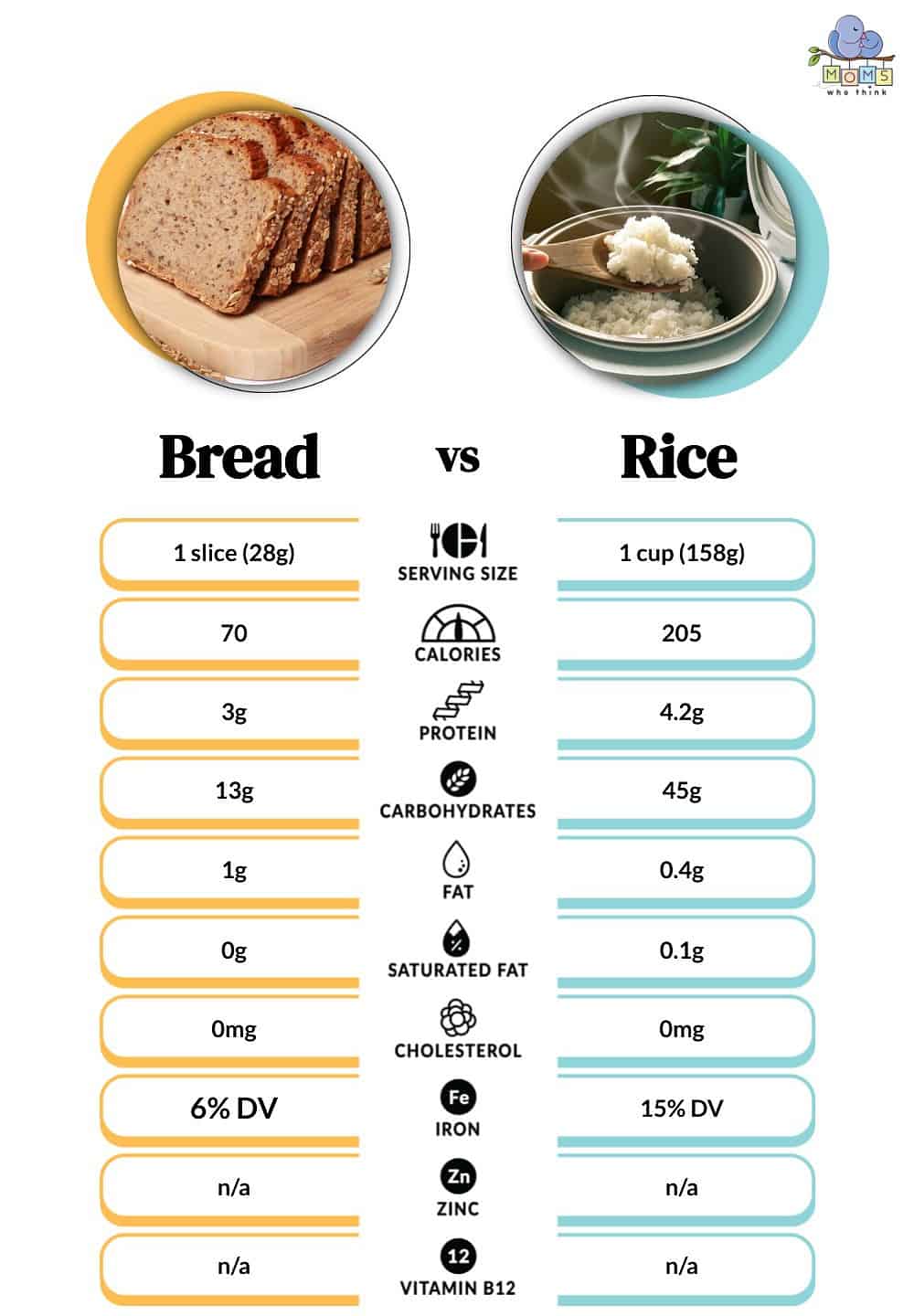
©
Similarities Between Bread and Rice
Rice and bread naturally contain roughly equal amounts of vitamins and minerals, but enhanced varieties are frequently offered where the amount of nutrients like iron, calcium, and folate can increase substantially.
Both brown or white rice and bread contain relatively little fat—about one gram for both white and half a gram for whole-grain bread.
Furthermore, bread and rice both contain carbohydrates. Upon ingestion, absorption of all carbohydrates in the digestive system takes place and then transports it into the bloodstream as glucose or monosaccharides.
Certain options are healthier than others, even if one may not always be deemed ” superior” to the other. Experts advocate cutting less sugar in the diet to lose pounds. As a result, numerous individuals choose bread over rice to decrease weight or manage diabetes.
What is Rice?
People regard rice as the greatest food crop in the world, as it meets the daily nutritional demands of a myriad of people. Since it was first widely cultivated over 4,000 years ago in Asia, rice has expanded around the world, where about a third of the population relies on it for sustenance. Rice is largely made of carbohydrates, which account for roughly 80% of its weight. Starch makes up the majority of the carbs in rice.
The little cluster of kernels at the apex of the long stalk of rice gives it the traditional image of grass. Once it reaches a golden color, it is collected, and the crop that results undergoes threshing to get rid of the hulls.
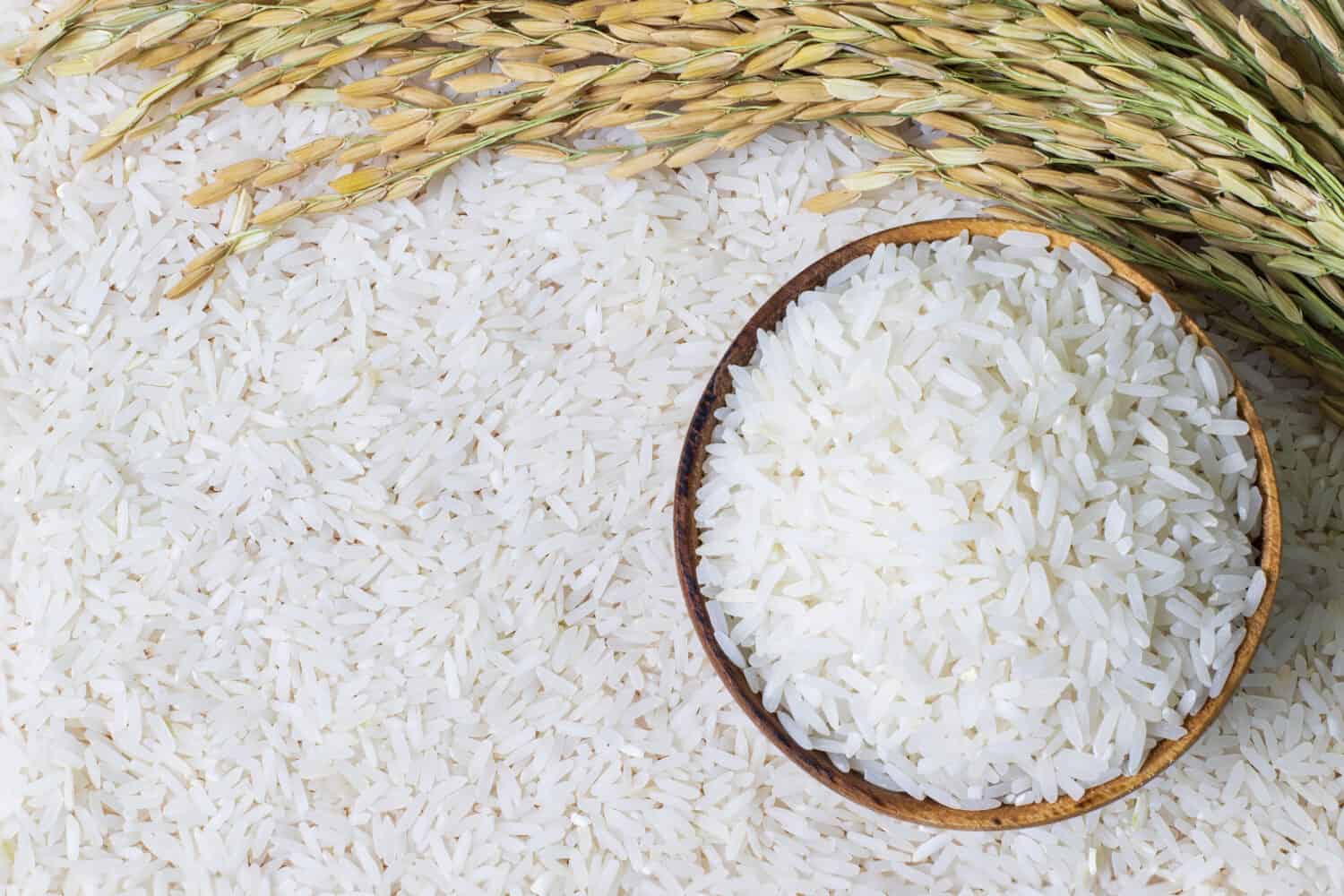
Starch makes up the majority of the carbs in rice.
©SURAKIT SAWANGCHIT/Shutterstock.com
Origin of Rice
Rice was both a meal and a symbol of customs, according to historical textbooks. As early as 2000 BC, rice was being grown in the region bordering India and China. Long grain types of rice first originated on the Indian subcontinent, whereas short grain variants were produced in the Yangtze River basin in south-central China.
In India, archaeologists doing excavations found rice that may date to 4530 BC. Archaeologists in India continue to claim that their documentation indicates the start of rice cultivation in the Ganges river basin by individuals unrelated to the people of the Yangzte.
But in 2800 BC, China first mentioned rice in their writing. In light of these more recent discoveries, a number of researchers now concur that the Yangtze River region of China is the location where rice was first cultivated.
- The must-have convenient reference guide for every home cook!
- Includes more than 8,000 substitutions for ingredients, cookware, and techniques.
- Save time and money on by avoiding trips to grab that "missing" ingredient you don't really need.
What is Bread?
Bread is a type of baked good that is formed from a meal or flour that has been soaked, kneaded, and in some cases, fermented. To create bread, you will need first to make a dough consisting of a mixture of flour, water, salt, yeast, and various other ingredients.
Bread was utilized as an absorbent dish throughout the Middle Ages. People back then refer to it as a trencher. After dinner, trenchers are consumed, distributed to poverty-stricken people, or fed to dogs.
Since the dawn of time, it has been a staple cuisine, prepared in a variety of ways, making use of a wide range of materials and techniques. Bread has become an integral part of religious rites, contemporary cultural life, and languages as a fundamental staple consumed by people all over the world. Its significance transcends past its simple nourishment.
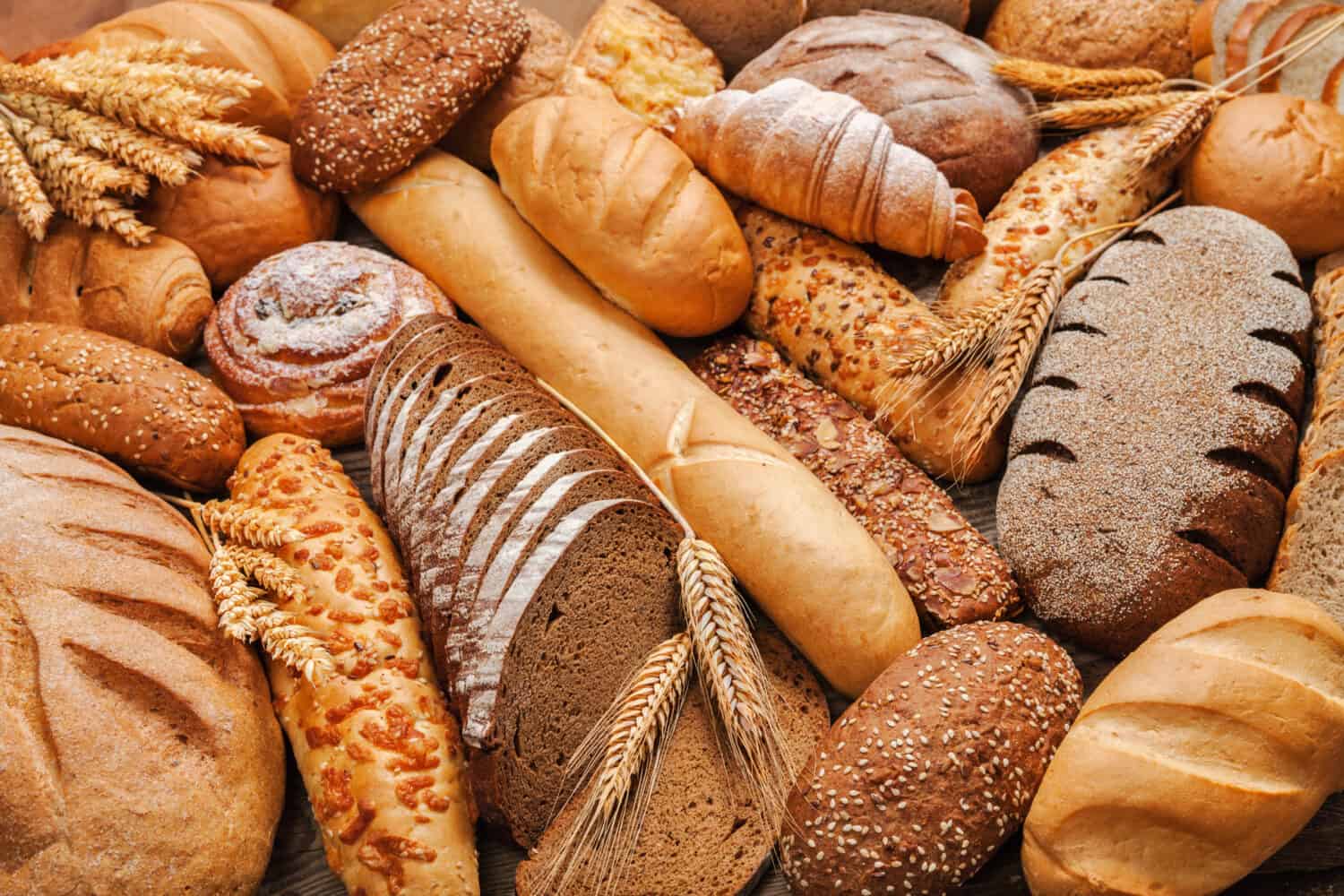
Bread is a basic meal that people bake by using a dough made from flour (typically wheat) and a liquid (water or milk).
©Timmary/Shutterstock.com
Origin of Bread
Bread is the most ancient food that cannot be obtained through scavenging or hunting. It was an important element of the history of mankind and helped to shape the beginnings of human cultures. This was one of the earliest consumables in civilization's history, and bread aided in the earliest stages of human society.
Humans abandoned their nomadic lifestyle and started raising crops and cultivating grains. With an abundance of grains, they ground and started baking bread, fortunate to have a diverse range of options. The Middle East, notably Egypt, is where the oldest bread is believed to have originated around 8000 BC. Bread contains wild yeast, which changed the flat, dense bread into a lighter, airier bread with a distinctive texture.
Cultural Significance of Bread
Due to its origins and current relevance, bread is significant to numerous Western and Asian cultures in ways that transcend simple sustenance. For many years, bread has served as an integral component of civilization. It is a crucial part of daily life and a representation of history, culture, poverty, prosperity, conflict, and tranquility. Preserve, share, and tell stories to nurture cultural identity and uplift small-scale businesses in our communities.
Cultural Significance of Rice
Rice is a staple in Asian culture in addition to its place at the dinner table. As a gesture of blessing, people throw rice at newly married individuals. Also, according to customs, people use rice in order to fend off supernatural forces before relocating to a new home. Rice is not just a regarded “gift from God” but also an integral component in life among numerous native Southeast Asian societies.
Conclusion
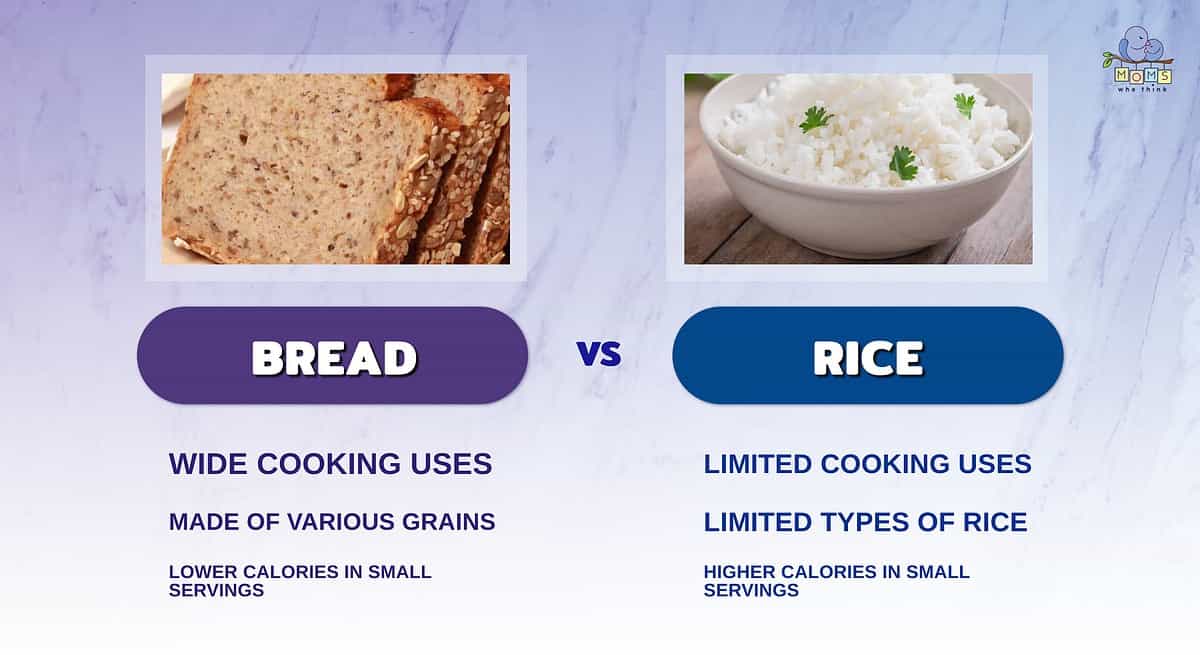
- Certain types of bread are far lower in calories than rice.
- Bread comes in all forms and types and rice is simply just rice.
- Bread can be used in a wide range of dishes while rice is very limited.
- Rice can be very filling with a smaller amount making it better for feeding a lot of people.
Both distinct and essential, these carb-rich foods nourish and sustain many, contributing to overall nutrition and well-being.
Whether you prefer a crusty loaf of bread or a bowl of steaming rice, these two foods are an important component of people's culture and lifestyle.
Your nutritional objectives still determine your choice between the two, as rice has greater amounts of minerals and vitamins while bread contains fewer calories and carbs. So allow your taste senses to be the final jury in this never-ending search for culinary delight as you indulge in their alluring allure and explore their countless varieties.
Check out this delicious farmhouse rye bread recipe:
Print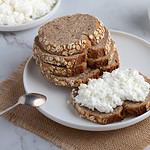
Farmhouse Rye Bread
Ingredients
For Dough:
1 cup scalded milk
2 Tablespoons sugar
1 ¼ teaspoon salt
2 Tablespoons butter, softened to room temperature
3 ¾ cups all purpose flour
1 ¾ cups rye flour
¼ cup cocoa
For Yeast Sponge:
2 (¼ oz.) packages dry yeast
½ cup water warmed to 115°F
1 teaspoon sugar
Instructions
1. To make the dough: In a medium heavy bottomed pan, heat milk, sugar, and salt over medium heat until small bubbles form around edges. Remove from heat, add butter, and stir until melted. Let cool to room temperature.
2. To make the sponge: dissolve yeast in warm water. Add sugar. Let stand uncovered in a warm place for about 10 minutes to proof.
3. Sift all purpose flour, rye flour, and cocoa into a medium bowl.
4. Mix proofed yeast and cooled milk mixture in the bowl of a standing mixer fitted with the paddle attachment. Beat in dry ingredients, 1 cup at a time, until well mixed. Change to dough hook and knead for 3 to 4 minutes, or until dough comes together and is smooth and shiny.
5. Coat a medium bowl with vegetable spray or butter. Place dough in greased bowl. Coat a piece of plastic wrap with vegetable spray ( to prevent sticking) and place it loosely over dough. Allow dough to rise until double in size, about 1 hour. Punch down dough and divide in half.
6. Coat two 9 inch by 5 inch by 3 inch baking pans with vegetable spray. Shape dough into two loaves on a lightly floured work surface. Place loaves in prepared pans and let rise until double in size, about 1 hour.
7. Place the oven rack in the middle position. Preheat the oven to 375 degrees F.
8. Bake breads until crusty, about 40 minutes. Turn bread out of pans onto rack and cool to room temperature.
- The must-have convenient reference guide for every home cook!
- Includes more than 8,000 substitutions for ingredients, cookware, and techniques.
- Save time and money on by avoiding trips to grab that "missing" ingredient you don't really need.
